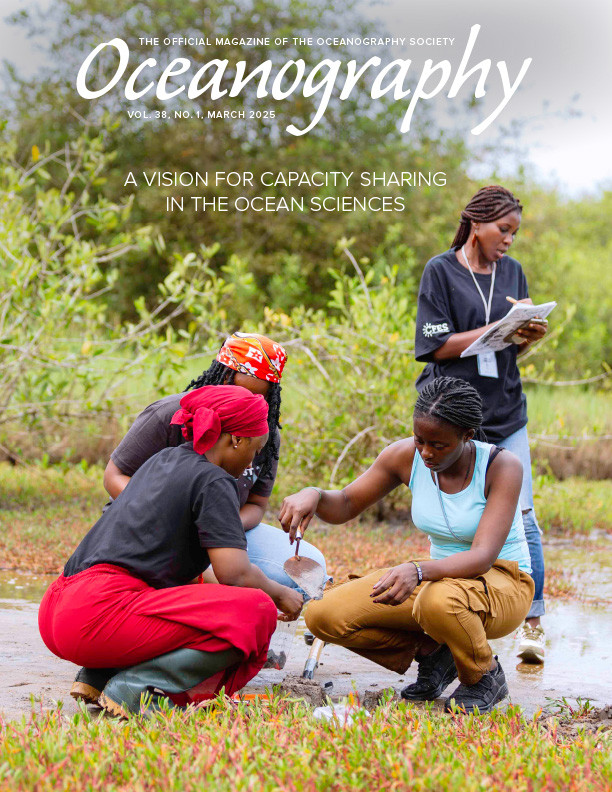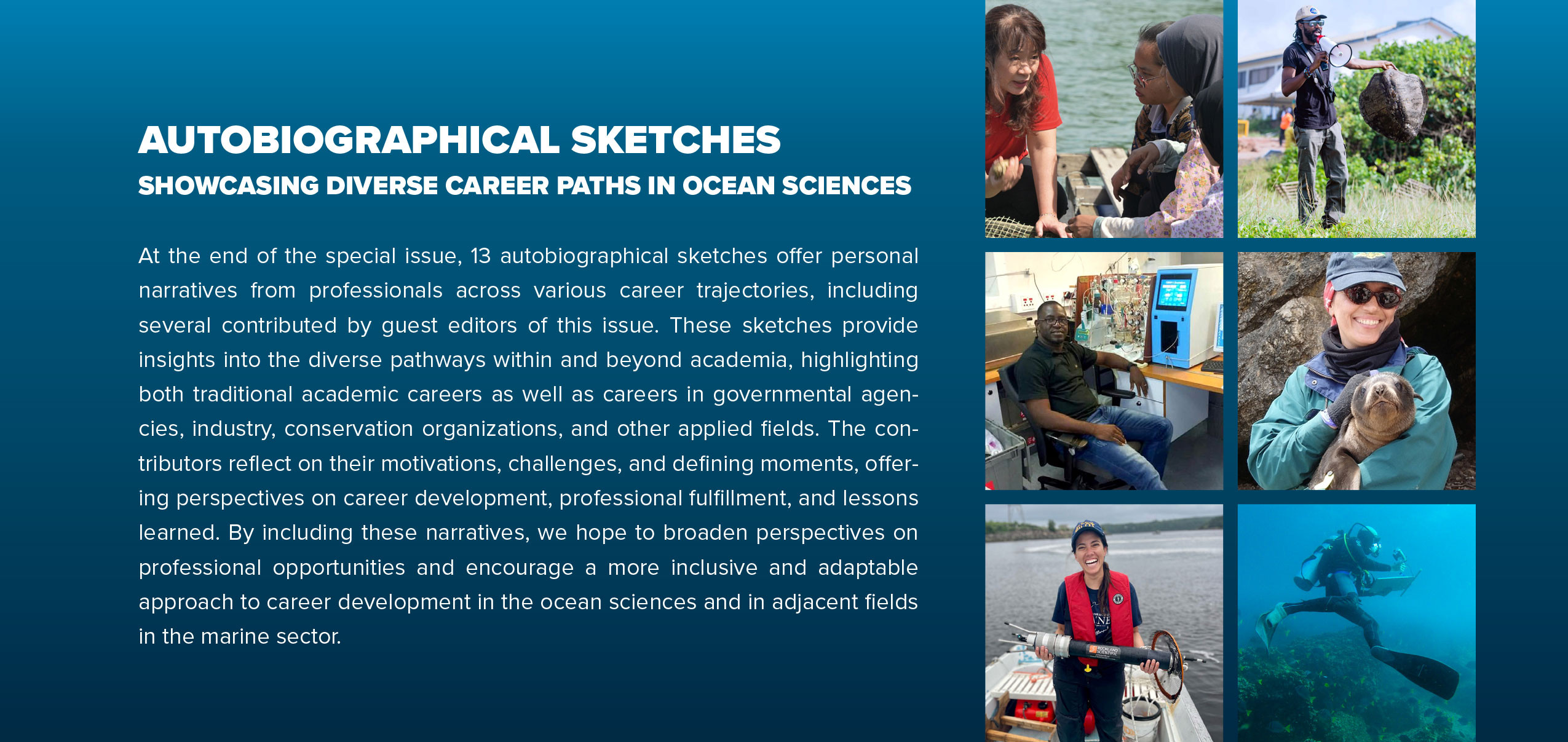Full Text
International scientific capacity building efforts form the foundation for global sustainable solutions to social, economic, and environmental challenges (Harden-Davies et al., 2022; Miloslavich et al., 2022). The following description appears in a 2008 report from the National Research Council:
Capacity-building describes programs designed to strengthen the knowledge, abilities, relationships, and values that enable organizations, groups, and individuals to reach their goals for sustainable use of ocean and coastal resources. It includes strengthening the institutions, processes, systems, and rules that influence collective and individual behavior and performance in all related endeavors. Capacity-building also enhances people’s ability to make informed choices and fosters their willingness to play new developmental roles and adapt to new challenges. Capacity is about more than potential; it harnesses potential through robust programs to make progress in addressing societal needs and is fundamental to fostering environmental stewardship and improving the management of ocean and coastal areas and resources.
Capacity building efforts require co-design and coordination for effective monitoring, modeling, and applications at local scales in a way that allows synthesis of information to address global-scale issues (e.g., Bax et al., 2018). Yet, the resources needed to conduct ocean science—including observational equipment, internet, and computational resources, and the capacity to train the next generation—are not evenly distributed globally. This unequal, patchy distribution of resources hinders the development of practical, science-based solutions to some of the most challenging ocean problems facing the world population. Additional barriers to successful global capacity building include fragmented training and education programs that are typically too short to achieve long-term benefits. Lack of coordination hinders the sharing of information and experience and may reduce the likelihood of long-term support (NRC, 2008). Low- and middle-income countries are also often ill-equipped to share data according to FAIR (findable, accessible, interoperable, reusable) data principles, making it difficult to include and interpret any data collected. In this special issue, Mahu et al. describe barriers that must be overcome in West Africa, in particular, to strengthen ocean science capacity in that region.
Note that while we use the term “capacity building” above to describe the activities related to training and educating, we use the term “capacity sharing” in our special issue title to acknowledge that the act of building capacity is a shared effort. All partners in a capacity sharing effort bring expertise and help to train others in becoming active partners in the global ocean sustainability effort. Capacity sharing also acknowledges that local knowledge and traditions can inform how a capacity building team works toward sustainability goals (Miloslavich et al., 2022).
Special Issue Content
This special issue of Oceanography on A Vision for Capacity Sharing in the Ocean Sciences aims to (1) describe the global benefits of sustained capacity sharing in ocean science, technology, and applications; (2) identify the barriers to capacity sharing; (3) share best practices on how to build and sustain capacity sharing programs, including lessons learned by those who have led such programs; (4) highlight the importance of capacity sharing to jobs and the economy; and (5) identify synergies among existing and new capacity-sharing programs, including those formed through the UN Decade of Ocean Science for Sustainable Development (2021–2030), the Scientific Committee on Oceanic Research (SCOR), the Partnership for Observation of the Global Ocean (POGO), and the International Oceanographic Data and Information Exchange (IODE) of the Intergovernmental Oceanographic Commission of UNESCO (IOC/UNESCO). The intent of the special issue articles is not to be comprehensive in listing all possible capacity building and capacity sharing efforts that may have existed or that are offered. Rather, our most important objective is to provide readers with a valuable resource for developing, improving, coordinating, implementing, and promoting capacity sharing programs in the ocean sciences globally. We welcome leadership among capacity building programs to connect, share, and coordinate on curriculum development and content of relevant courses.
To kick off the special issue, we distributed via several listservs a call for letters of interest in contributing long or short (“spotlight”) articles that would align with the issue’s goals. After review of the 50 letters of interest submitted, we sent invitations to roughly half of the interested parties. In several cases, we asked potential authors to collaborate with others who sent in letters of interest on similar topics or programs. We also invited a few additional spotlights to fill in gaps in content.
Based on the content distribution of letters of interest, most articles in this special issue share information about and lessons learned from running capacity sharing programs. Organizations such as IOC/UNESCO contribute to global capacity sharing through programs such as the OceanTeacher Global Academy and the IOC Ocean Traineeship, among others (Diwa-Acallar et al.). POGO implements several capacity sharing programs, such as the Visiting Fellowship Program (Seeyave et al.), the Shipboard Training Program (Krug et al.), and the Nippon Foundation-POGO Centre of Excellence in Observational Oceanography (Krieger et al.). SCOR’s travel grant program has had a positive impact on participants (Twigg et al.). The Surface Ocean-Lower Atmosphere Study (SOLAS) builds community through mentoring, skill enhancement workshops, increasing access to resources, and a network of observation and training centers (Dinasquet et al.). The Ocean Foundation’s Ocean Science Equity Initiative (EquiSea) provides financial support for projects, coordinates capacity sharing activities, and supports the development of low-cost ocean science technologies, among other activities (Valauri-Orton et al. a).
Several articles in this issue report on long-running capacity sharing programs in Africa, describing their motivations, evolution, reach, and challenges. Since 2015, the Coastal Ocean Environment Summer School In Nigeria and Ghana (COESSING) has been a platform for exchanging knowledge, networking, learning, and collaboration (Arbic et al.). A master’s program in Benin that has been ongoing for 15 years has grown into a more regional program, training the next generation of ocean scientists for jobs in the civil, industrial, and commercial sectors (Alory et al.). A partnership between Cabo Verdean and German institutions, begun in 2004, has grown and has established ocean research and education infrastructure in West Africa (Fiedler et al.). Additional capacity sharing programs operating in Africa include Early Career Ocean Professionals (ECOP) Africa, Citizen Observation of Local Litter in Coastal Ecosystems (COLLECT), and Mundus Maris Africa (Saba et al.).
In addition to major program efforts, smaller collaborative learning experiences such as hackweeks (Martin et al.) and hackathons (Hochberg et al.) can be useful for building capacity through exchange of knowledge about and training in software, data, and computing resources that are openly available. These sessions are also opportunities to build relationships and support networks.
Various pedagogical methods can be used to build capacity, such as participatory action research, which integrates local knowledge with scientific research to foster collaborations (Fakoya et al.), and project-based learning that emphasizes “learning by doing” (Nyadjro et al.). Online courses that help learners develop solutions to combat marine litter have also been made available (Menck et al.). Collaborative research can also be used to build capacity, from academia to industry, and can bridge knowledge gaps and foster innovation (Sowah et al.). Others call for transdisciplinary studies to build capacity for addressing changing ocean systems (Renaud et al.).
Some capacity sharing programs focus on early career training in data management (Beaulieu et al.), promoting literacy in artificial intelligence (Satterthwaite and Robbins), and using volunteers who have local knowledge and the necessary skills to contribute to projects (Gelpi et al.). There are also programs that target early career scientists from Small Island Developing States (Chiba et al.) or that focus on youth engagement for sustainable small-scale fisheries such as Too Big to Ignore and Coast 2 Coast. These two programs focus on relationship building, shared responsibility, and inclusive engagement to shape meaningful change (Koch and Chuenpagdee).
Other capacity sharing projects, such as Backyard Buoys, leverage low-cost, scalable marine technology in partnership with regional ocean observing networks to enable Indigenous and coastal communities to gather and use wave data (Newton et al. a). For more than 20 years, the Discovery of Sound in the Sea Project has provided education and outreach opportunities focused on underwater sound; it is currently collaborating with other capacity sharing programs to develop low-cost sensors that would enable scientists to characterize underwater acoustic environments (Vigness-Raposa et al.). The Global Ocean Acidification Observing Network developed GOA-ON in a Box, a kit that provides under-resourced scientists everything they need to obtain weather-quality carbon system measurements. To date, researchers in 23 countries have received these kits and thus have been able to contribute to monitoring carbonate chemistry conditions related to ocean acidification (Valauri-Orton et al. b).
Some capacity sharing programs focus on specific science or sustainability goals, such as the Global Ocean Acidification Observing Network (Newton et al. b), the Global Mangrove Alliance (Veverka et al.), and the Marine Biodiversity Observation Network Pole to Pole (Moity et al.). Others focus on organizing regional capacity sharing, such as the proposed All-Atlantic Training Platform (Ekau et al.). Still others, such as the International Atomic Energy Agency’s Technical Cooperation Programme support capacity sharing efforts on a variety of topics, including ocean acidification, marine toxins, and various contaminants in marine ecosystems (Metian et al.; Dupont et al.).
In a final spotlight, Guilhon et al. share their ideas on how to measure the success of capacity sharing efforts beyond the traditional quantitative metrics of number of attendees, publications produced, and workshops held.
|
|
A Look to the Future
Where should capacity sharing programs go from here? We asked authors to include in their articles their thoughts about the future of their capacity sharing work, considering the knowledge gained by running programs and the feedback they have received from participants. Among the suggested improvements are sharing announcements in multiple languages, running hybrid online/in-person events and changing event venue locations to be more inclusive of and affordable for scientists from lesser-resourced countries, publishing plans for building low-cost instruments, leveraging existing infrastructure to increase global capacity, extending interdisciplinary collaboration, and engaging early career scientists in all capacity sharing efforts. Stable, long-term funding for programs is key to achieving these goals.


